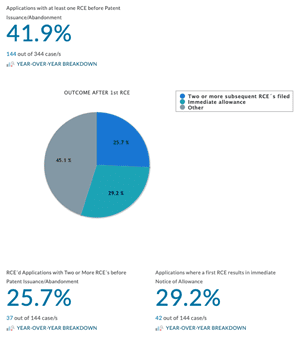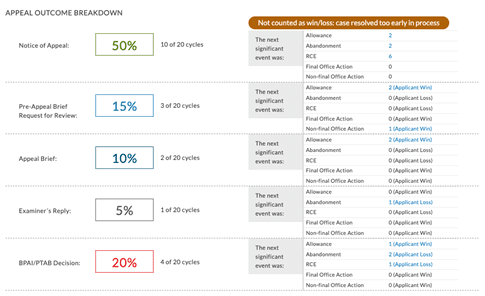What To Do After a Final Office Action

Patent professionals can only argue with their patent examiners for so long before an examiner issues a “final” office action. Fortunately, receiving a final office action does not mean the end of hope for patent applicants. Filing either a Request for Continued Examination (RCE) or an appeal are two options often pursued to keep patent applications alive after a final office action. Modern patent prosecution tools can help patent professionals and applicants determine which course of action is best for them.
File an RCE after a final office action
There are only limited situations where patent applicants can respond directly to final office actions. Patent applicants may want to consider filing an RCE to continue the discussion of substantive patentability issues with their assigned patent examiner. An RCE reopens patent prosecution and allows applicants and their patent practitioners to continue trying to obtain allowable claims. Offering new evidence in support of patentability, amending the claims to make them allowable, or fixing mistakes in a patent application become available as options with filing an RCE.
Filing an RCE comes with its own patent office fees, but its cost is generally comparable to that of a response to an office action. Although the price point is favorable compared to filing an appeal (keep reading for more on appeals), it is helpful to consider the difficulty of the patent examiner you are dealing with as well as how they typically respond when patent applicants file RCEs. Trying to determine how a specific patent examiner might respond to an RCE was a nearly impossible task before the rise of patent analytics. Today, the LexisNexis PatentAdvisor® patent prosecution analytics platform provides users with access to a wide variety of patent data and statistics on USPTO patent examiners. PatentAdvisor™ users can easily view important RCE statistics for their patent examiner, including how frequently RCEs are filed in the examiner’s cases and the likelihoods of different outcomes after an RCE is filed.

Appeal a final office action
One of the most appealing characteristics of an appeal is that it allows patent applicants to put fresh eyes on the examination of their patent application. Patentability is taken off of the initially assigned patent examiner’s desk and is sent to the Patent Trials and Appeals Board (PTAB) for consideration. As a result, appeals are often sought when a patent examiner’s rejections are viewed as improper or when amending (e.g., narrowing) the patent claims would ruin the commercial value of the patent. PTAB appeals do have their drawbacks; more specifically, PTAB appeals can be quite expensive ($10,000) and can take a year or more to finish.
Regardless of their cost and duration, appeals may be worthwhile after considering the anticipated value of the underlying patent and an applicant’s likelihood of success on appeal. PatentAdvisor empowers users to see how often their patent examiner’s decisions have been appealed successfully and otherwise. Not only can users evaluate the likelihood they will win in an appeal at a high level, but they can also view important statistics for each stage of the appeals process (e.g., Notice of Appeal, Appeal Brief, Examiner’s Reply, etc.).

Sometimes a little extra information can make a big difference in decision making. PatentAdvisor patent data and analytics help users understand their patent examiners on a deeper level so that they can better predict their examiners’ actions. Patent examiner data and statistics relating to RCEs and appeals can help users develop well-informed strategies after receiving a final office action.
Now you can access examiner analytics from the USPTO Patent Center and Private PAIR websites.
Read how patent prosecution analytics are no longer just a nice to have and watch the on-demand webinar.
Learn more about PatentAdvisor.

Need more predictability in the patent prosecution process?
Learn how to develop successful IP strategies and proficiently manage patent applications throughout the entire prosecution process using data-driven insights and advanced analytics.
